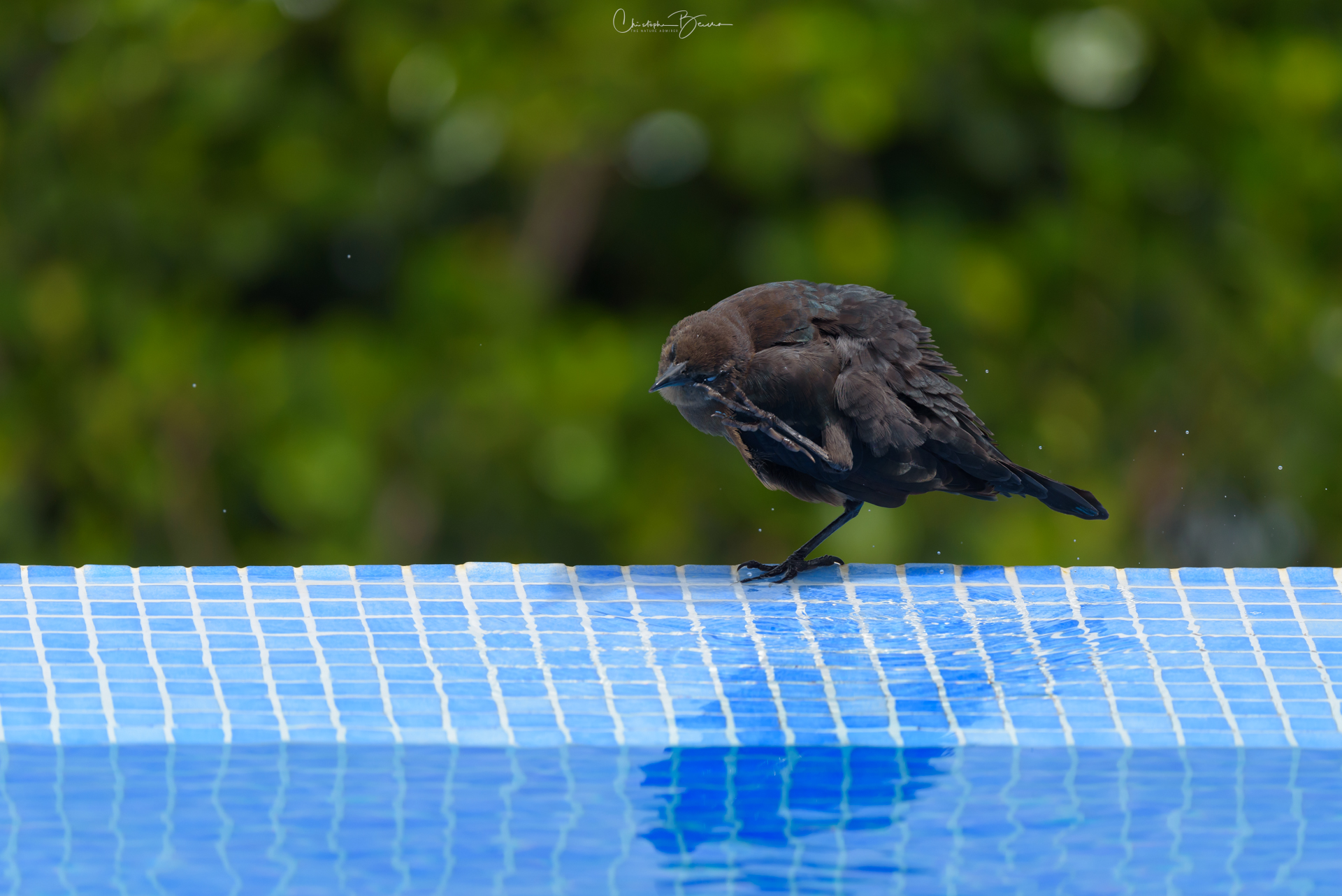Stripe-tailed Hummingbird, (Eupherusa eximia)
Stripe-tailed Hummingbirds are distinguished from other hummingbirds by its rufous wing patch, although that characteristic is shared with the Blue-tailed (rare in Costa Rica) and Black-bellied Hummingbirds. It has a white vent and tail underside, along with the outer two feathers of the tail being white on the upperside. The male shows a dark blue patch on the throat which continues until the chest. During flight, the wings look almost entirely rufous, with only a lining of green feathers on the shoulders. The female has a white throat and chest. Both sexes resemble the Coppery-headed Emerald, although the latter is smaller.




























